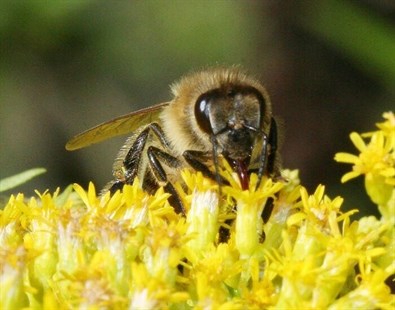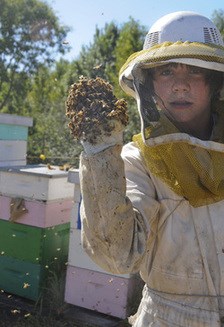
The city is looking to allow backyard beekeeping in urban areas.
Image Credit: Kamloops Beekeepers via Facebook
March 10, 2014 - 2:58 PM
KAMLOOPS — City backyards could soon be home to bees thanks to proposed changes to the animal control bylaw.
Back in November Frank Blom and Carl Anderson of the Kamloops division of the B.C. Honey Producers Association asked the city to allow bee hives in urban areas and while several council members didn't want to see staff resources used towards research at the time there was enough appetite for a change.
Coun. Tina Lange said because a lot of bees and hives are already out there she wants to to see them legitimized, and possibly make it safer for the community by having guidelines in place.
“Our club is strong, we educate and learn from each other... we've gone from about a dozen people to upwards of 40 in five years,” Blom said in explaining the interest in urban beekeeping, adding there is little threat to humans from bees. “Bees are not predators, bees die if they use their stinger, they don't use it if they don't have to.”
Staff worked quickly and earlier this week council approved sending the proposed changes to a public hearing.
In an effort to promote biodiversity and food security staff supports the idea of allowing beekeeping in city backyards as well as school yards, church lots and park property when associated with a community garden or education program. The number of hives would be dependent on the size of the lot.
Aside from pollinating plants honeybees provide products such as honey, bee pollen, royal jelly and beeswax and can act as educational tool. While there are many uses for bees staff does point out beekeeping may pose risk and nuisance due to stingings, warming, gravitating to adjacent bodies of water and leaving waxy droppings in the spring.
To minimize the impact, staff is suggesting setbacks and flight path regulations. Under provincial legislation anyone keeping bees is required to register under the Apiary Registration Program, which helps deal with complaints, inspections and disease.
Did you know?
- The honey bee has been kept for centuries by beekeepers.
- Bees produce honey from the nectar of flowers.
- They play an important role in agriculture as pollinators for many different crops.
- Bees are divided into three classes and the most commonly observed are worker bees.
- Worker bees are all female.
- Worker bees forage for food, clean the hive and queen, build and protect the hive and other specialized functions.
- Worker bees have stingers but die soon after stinging.
- Honey bees usually are 1.2 cm to half an inch in length.
- Eggs develop into larva in about three days and then emerge as queens (16 days), workers (21 days) or drones (24 days.)
- A queen can lay up to 2,000 eggs a day during peak months.
- The queen regulates the hive's activities by guiding behaviour through pheromones.
- Drones are all males and their only purpose is to mate with a queen.
- When a hive population becomes too crowded some of the population will naturally leave in a swarm.

There are already many beekeepers just outside of the city, including Lewis Burkholder from Pritchard.
Image Credit: kamloopsbeekeepers.com
To contact a reporter for this story, email jstahn@infotelnews.ca or call (250)819-3723.
-This story was updated at 9:08 a.m., March 6, 2014 to add council approval.
News from © iNFOnews, 2014